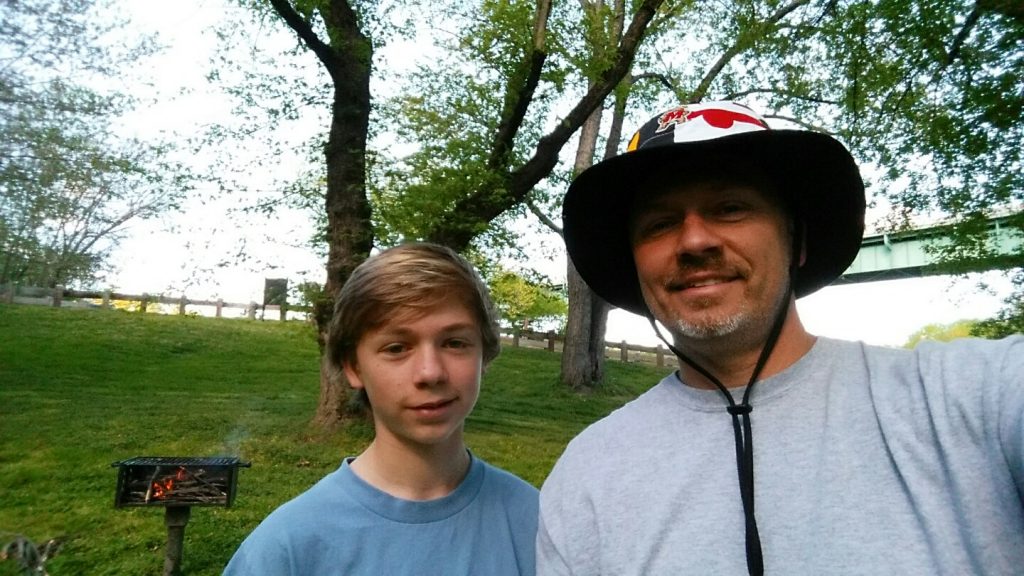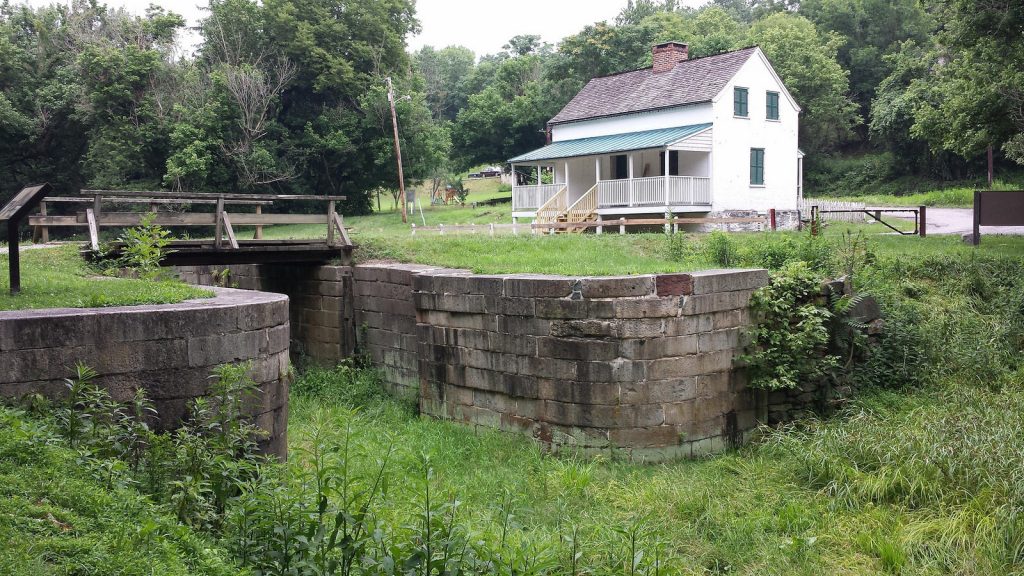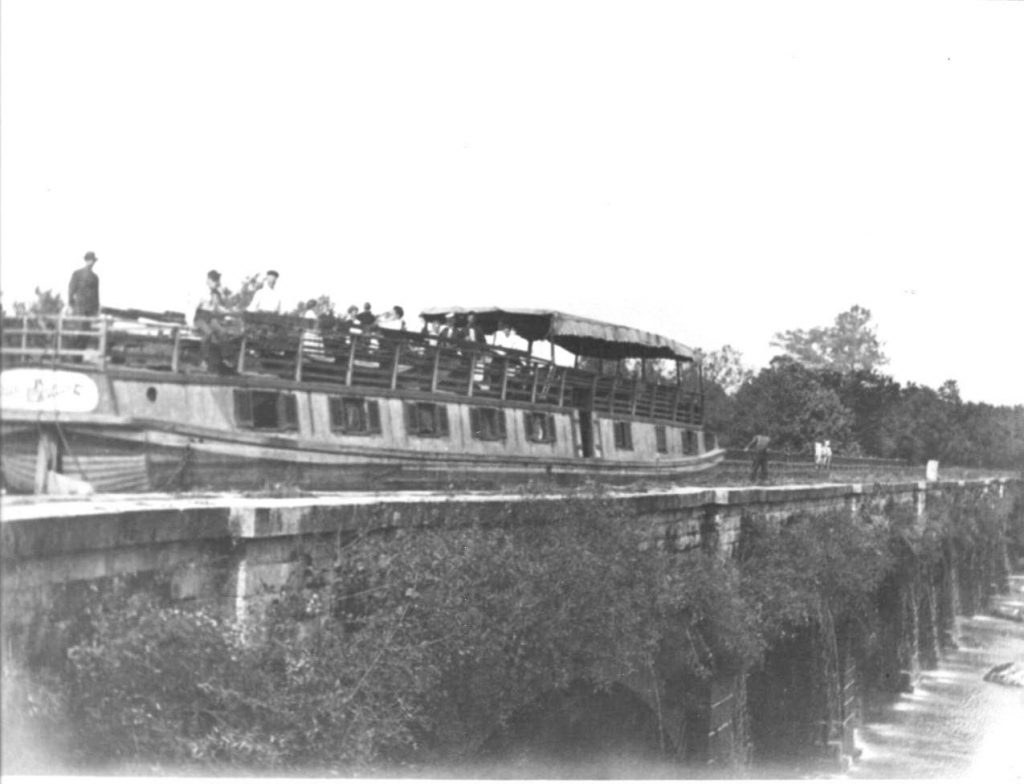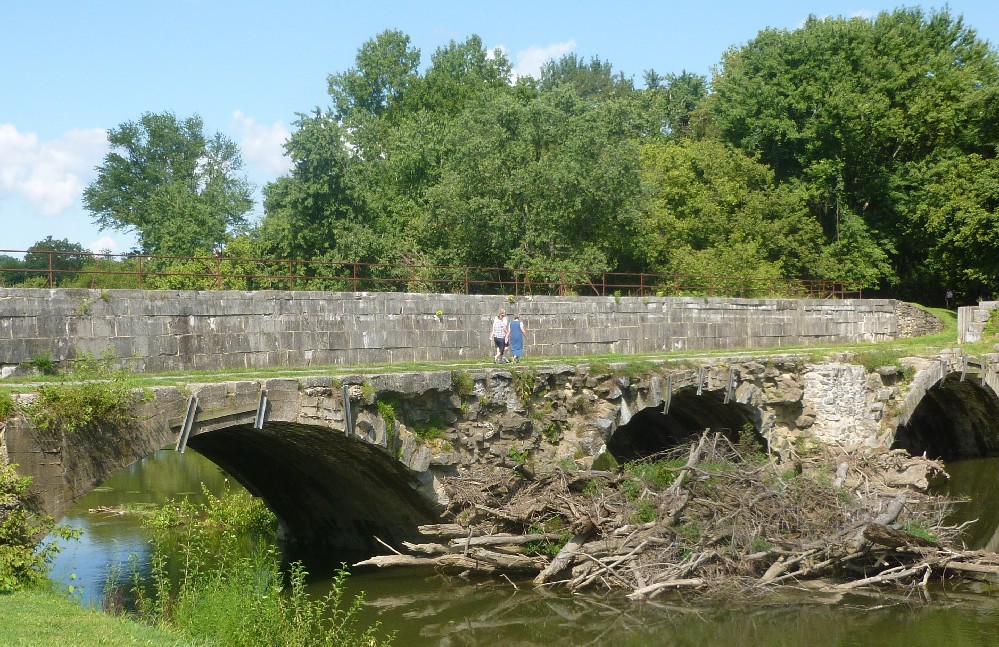-
I recently took my oldest son hiking on the C&O (Chesapeake and Ohio) Canal tow path starting at Point of Rocks, Maryland and hiking out to around the Harper’s Ferry, West Virginia area.
During the hike I realized there are a ton of lessons we could be teaching students using these historic pieces. The history lessons are obvious, but what aren’t so obvious are the STEM lessons.
-

Simple Machines
Sprinkled along the trail are lock houses, the dwellings built for the lock keepers so that they could be available to help boats pass by once they arrived at the locks. These are simple two-story structures made of stone.
The lock houses have survived almost 200 years despite exposure to the elements of harsh winters and hot summers as well as several floods and hurricanes. This is a testament to the simple stone construction, basic rectangular shape, and pitched roof.
-

Lock 29
-
Just as impressive as the houses are the locks. They are large stone structure, made primarily of granite. While the canal itself is primarily gone, the locks are almost exactly the same as they were 200 years ago. The locks have endured the same floods and weathering effects as the house, but also the millions of gallons of water flowing through them each day.
The question to ask students here is: How did the workers lift the stone into place in the lock? These were massive granite blocks and they had no heavy equipment then. To achieve this task, workers would have used simple machines such as levers, fulcrums, and pulleys.
Materials Science
Why would lock builders use granite which had to be mined from a quarry, rather than slate or sand stone which was abundant around the river?
The granite did not come out of the quarry shaped like a block – someone had to cut it. Therein lays the exploration of material science and material processing learning concepts.
Construction Methods
The lock houses themselves are a fantastic lesson in construction methods. The shape of the roof, the choice of materials, the rectangular footprint of the foundation, and so on. These are the building blocks of modern construction. Using sturdy materials and sound construction methods allowed workers to build houses that could withstand time and the elements.
My children have built Lego houses in school and learned why certain construction methods were best. A visit to the C&O Canal certainly adds relevance to this lesson.
-
Engineering: Bridge Design and Construction
One of the lock houses we passed, called Lock House 29, sits next to an aqueduct which allowed the canal to go up and over a small river. The aqueduct collapsed in the 1970s but was rebuilt using most of the original materials with a new steel support underneath. Still, for that structure to last from the early 1800s to the 1970s is incredible.The aqueducts were made from stone- without a steel structure – and were arch style construction. Again, no heavy equipment was available so simple machines were used to hoist and lift materials into place. Imagine the weight that these structures had to hold: many thousands of gallons of water as well as a large boat carrying people and cargo.
-

Boat on Monocacy Aqueduct
-

Monocacy Aqueduct today
-
While the typical high school engineering program may ask students to design a specific aspect of bridge as part of a competition, and added bonus would be to require students to use construction styles consistent with the early 1800s. This blend of history and modern engineering gives students an appreciation for historical construction techniques.
My son enjoyed our hike and just like me, he was fascinated by the historic sites we passed along the way. It would great if our local schools could use a resource such as the C&O Canal to better engage students in an understanding of some of these learning concepts.
One Comment